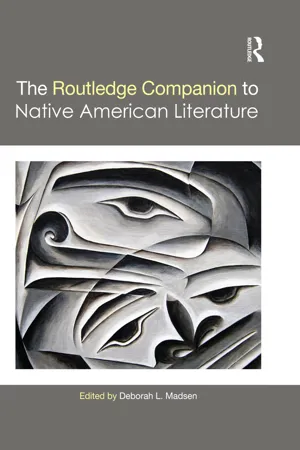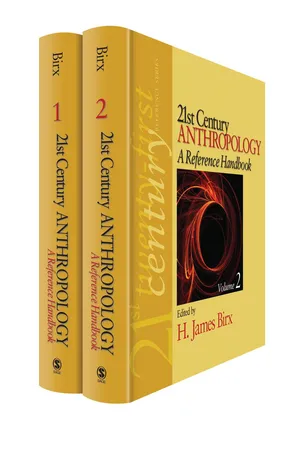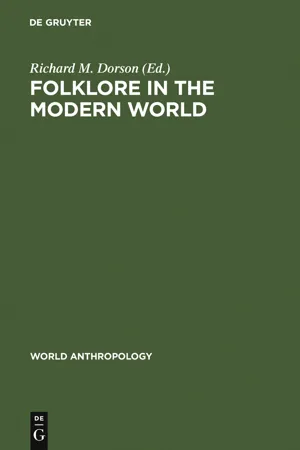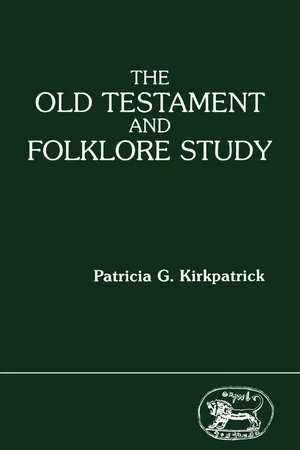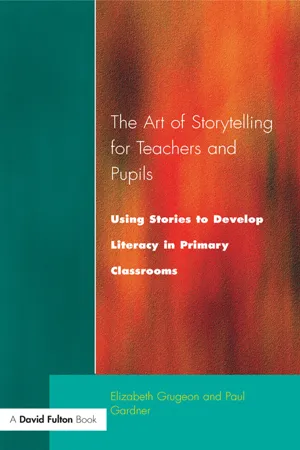Literature
Oral Narratives
Oral narratives are stories, myths, or legends that are passed down through generations by word of mouth rather than being written down. They are an important part of many cultures and have been used to preserve history, traditions, and values. Oral narratives often reflect the unique perspectives and experiences of the communities from which they originate.
Written by Perlego with AI-assistance
Related key terms
1 of 5
8 Key excerpts on "Oral Narratives"
- Deborah L. Madsen(Author)
- 2015(Publication Date)
- Routledge(Publisher)
28 The Historical and Literary Role of Folklore, Storytelling, and the Oral Tradition in Native American Literatures
Susan Berry Brill de RamírezDOI: 10.4324/9781315777344-28To understand any written literature, attention needs to be paid to its craft, its distinctive language and rhetoric, its style and form, its literariness. This is especially true for Native American literatures which are deeply informed by their respective tribal traditions of storytelling and oratory. And to begin to understand Native American literature, attention must be paid to the language, form, rhetoric, and literariness which are (1) in many cases reflective of present and past oral traditions and (2) integrally tied to tribal literary and linguistic heritage and influence. While the primacy of oral traditions as historically significant is a fact for all literatures, Native American literature stands out due to its ancestrally and culturally genetic positioning between its traditional, tribal oral cultures, languages, and rituals and its place as part of the larger American and Canadian literary canons. The precedence of orality in relation to literacy and textuality is a global fact: in terms of chronology, all written literatures have oral literary traditions as precedent and formative. However, for all of the tribes of North America, the shift to a predominantly written culture has been relatively recent within the global history of writing – for many tribes, largely occurring just within the past two centuries.- H. James Birx(Author)
- 2010(Publication Date)
- SAGE Publications, Inc(Publisher)
Nontraditional forms of storytelling can be told by nonprofessionals, embrace dif-ferent methods of delivery, and present stories that are not necessarily only oral traditions. Contemporary examples of nontraditional storytelling are urban legends, personal narratives or vernacular storytelling, and original stories crafted by a storyteller. Oral Versus Written The conflict between oral and written is often at the heart of the struggle to define storytelling. Purists will claim that storytelling is the continuance of an oral tradition only, excluding any texts that have been written. However, this exclusion is difficult, considering that many ancient oral traditions have been written down in order to be pre-served and were never studied in their actual oral form. The only way that modern culture has access to such oral tradi-tions, such as the epic poem The Odyssey, is through its written version. Walter Ong (1982) explored the relation-ships between the oral and the written in his book Orality and Literacy, which is often cited by current scholars who seek to present distinctions between oral and written story-telling. These scholars have explored and presented terms such as oral literature, narrative literature, and literary tradition to distinguish the oral from the written. Folklorist Jack Zipes (1994) pointed out that the oral tradition was not replaced by the literary tradition but rather there is evidence that the literary traditions are influenced by the oral tradi-tions. Stith Thompson (1951) also spoke about the diffi-culty of separating written and oral traditions in his book. A purely oral tradition in storytelling not only excludes writ-ten traditions, but also overlooks new technologies. It is generally agreed that simply reading a text is not story-telling. However, taking that text and breathing life into it during a performance is considered by some to be as valid a storytelling event as recounting an oral legend.- eBook - PDF
- Richard M. Dorson(Author)
- 2011(Publication Date)
- De Gruyter Mouton(Publisher)
For Bascom, folklore is verbal art (Bascom 1955:245-252). The idea of differentiating the two terms is good. If folklore and oral tradition were classified as one entity, all information in nonliterate cultures would be included under the term folklore. Differentiation be-tween the terms is advantageous, also, because it is not necessary to attach the criterion oral to folklore. In practice, a folklorist confronts literary tradition (booklore) as well as either wholly or partly nonverbal material. The meaning of oral tradition depends crucially on what is understood by the words oral and tradition, whereas the meaning of folklore consists of the meanings of the words folk and lore. The task of a student of folklore is both wider and narrower than that of one who deals with oral tradition. Students of oral tradition study all orally transmitted tradition information, the former study only a part of it, but the folklore student may, in addition to verbal tradition, also consider nonverbal material and written material as well. The central problem of the study of oral tradition is the process by which tradition is transmitted in speech from speaker to hearer. In their quest for text materials, folklorists have all too often been content to approach their research as if it were a question of merely locating and examining written documents. The care taken in trying to locate every single item of information on a subject from archives and literary sources for comparative research has been commendable. On the other hand, how the texts came to be in the archives, how they came to be recorded and in what context they existed as living tradition have often been ignored. What Malinowski said as early as 1926 has been forgotten: The text, of course, is extremely important, but without the context it remains lifeless (1926:24). - eBook - PDF
- Patricia G. Kirkpatrick(Author)
- 1988(Publication Date)
- Sheffield Academic Press(Publisher)
2. Folk Narrative: Its Composition and Transmission 65 suggested that whereas these are aspects of oral compositions, they are inadequate criteria upon which to base distinctions between oral and written compositions. For Finnegan the most important aspect of an 'oral' style is the performance. It is this element which most clearly distinguishes oral from written compositions. We should look to the performance 'as well as the bare text' for specific distinguishing characteristics. 66 More precise criteria for determining a specific oral style are not possible. But as Finnegan reminds us: If the line between oral and written cannot be drawn with any precision, why should there be two distinct styles differentiated by a single crucial factor? 67 It is this aspect of performance which needs to be studied for a more complete understanding of orality. In so far as folklore is Verbal art' which is communicated by tradition bearers, then the way it is transmitted and what happens in the process of transmission are important elements. 2. Oral Narrative Transmission In Chapter 1 it was argued that the relative fixity of OT material at the oral stage was an issue on which there was little agreement amongst biblical scholars. A whole range of opinion could be found, from total rejection of ever being able to establish what was once the original oral form of a tradition, to GunkeFs belief that such forms were distinguishable, and had been reliably transmitted by a 'professional class of story-tellers'. Nyberg, Birkeland, Engnell and Nielson maintained that whereas the original form cannot be uncovered, these traditions originated at the oral stage and were only slightly transformed by the tradition circles which transmitted them—a process which in some cases lasted hundreds of years. - eBook - ePub
The Art of Storytelling for Teachers and Pupils
Using Stories to Develop Literacy in Primary Classrooms
- Elizabeth Grugeon, Paul Garder(Authors)
- 2013(Publication Date)
- Routledge(Publisher)
The National Literacy Strategy Framework for Teaching (DfEE 1998) is closely related to the English Order and provides a more detailed basis for implementing the statutory requirements of the programmes of study. The focus is on Reading and Writing but in the Reception Year we find that considerable emphasis is placed on the development of oral storytelling: ‘Pupils should be taught to use knowledge of familiar texts to re-enact or re-tell to others, recounting the main points in correct sequence’ and ‘to be aware of story structures e.g. actions/reactions, consequences and the ways that stories are built up and concluded’. In Year 1 Term 1 this is continued; they are ‘to re-enact stories in a variety of ways e.g. through role play, using dolls or puppets’. In Term 2, they ‘should be taught to re-tell stories, giving the main points in sequence’ and should practise using some of the key features of story language in oral retellings. In Term 3, they are ‘to prepare and re-tell stories orally, identifying and using some of the more formal features of story language.’ Early literacy development is seen to be dependent on a rich diet of stories read aloud and told. The National Literacy Strategy (NLS) implicitly acknowledges the significance of spoken language in this process. In Year 2 Term 2, although the emphasis has shifted from telling to writing, we still find that ‘pupils should be taught to prepare and re-tell stories individually and through role play in groups using dialogue …’. In Year 3 Term 1, pupils should ‘be aware of the different voices using dramatised readings showing differences between narrator and different characters used e.g. puppets to present stories’. This would clearly benefit from an oral as well as written approach. In Year 3 Term 3, under Reading and Comprehension strategies, pupils should be taught to ‘re-tell main points of story in sequence; to compare different stories …’. In the first three years of schooling the National Literacy Strategy systematically lays the foundation for increasingly sophisticted skills of comprehension and composition at text level in which oral storytelling can play a significant role. By Year 5 Term 2 children are required to become familiar with traditional stories, myths, legends and fables from a range of cultures. They will be expected to be able to ‘identify and classify the features of myths, legends and fables’ and to ‘explore the similarities and differences between oral and written storytelling’. Developing skill as tellers of stories will inform both the comprehension and composition of literary texts; practical experience will inform the analysis and construction of texts. Although the activities listed above only represent a very thin strand of text level work in the framework for teaching, it is nevertheless a significant one, which usefully overlaps with the requirements for drama in the National Curriculum.Storytelling and literacyWhile the National Literacy Strategy framework may seem to make little explicit reference to oracy, it is acknowledged that Speaking and Listening do provide the foundation for literacy, and the National Curriculum makes this explicit. What the Literacy Strategy does make clear, however, is the contribution that oral storytelling makes both to the development of writing and of reading; through telling stories children learn about their structure, the significance of the setting, the role of characterisation, and the power of the language; they learn to use language to create an effect on an audience. For all children there will be, at least initially, ‘a gap … between what they can say and what they can comfortably produce in writing’ (Fox 1993:65). Looking at children’s oral and written versions of the same story, we can see how much more confidently they use storytelling techniques in an oral rather than a written version. But it is also interesting to see how dependent an oral version can be on previously heard written versions. Eight year old Rhian writes a story, The Party in Transylvania’, (Slater 1995): - eBook - PDF
- Craig J. Calhoun, Francis A. Janni, Craig J. Calhoun, Francis A. Janni(Authors)
- 2011(Publication Date)
- De Gruyter Mouton(Publisher)
The task of a student of folklore is both wider and narrower than that of one who deals with oral tradition. The latter studies all orally trans-mitted tradition information, the former only a part of it, but the folk-lore student may, in addition to verbal tradition, also consider non-verbal material and, besides oral tradition, written material as well. The central problem of the study of oral tradition is the process by which tradition is transmitted in speech from speaker to hearer. In their quest for text materials, folklorists have all too often been content to approach their research as if it were a question of merely locating and examining written documents. The care taken in trying to Oral Transmission of Knowledge 15 locate every single item of information on a subject from archives and literary sources for comparative research has been commendable. On the other hand, the questions of how the texts came to be in the archives or in the books, how they came to be noted down, and in what context they existed as living tradition have often been ignored. What Mali-nowski said as early as 1926 (1926: 24) has been forgotten: The text, of course, is extremely important, but without the context it remains lifeless. The significance of written variants has also been overesti-mated when attempts have been made by diffusionists to arrive at the original function of a folktale by, for example, interpreting texts. It is true that a really skillful text critic can make certain conclusions on the basis of the text alone, but a reliable taxonomy of tradition necessitates careful analysis of both source and context at the fieldwork stage. Dundes writes: One cannot always guess the meaning from context. For this reason, folklorists must actively seek to elicit the meaning of folklore from the folk (Dundes 1966). A holistic view of the transmission process means an attempt to arrive at a synthesis by analyzing systematically the different variables of the oral communication. - eBook - PDF
Teaching English to Young Learners
Critical Issues in Language Teaching with 3-12 Year Olds
- Janice Bland(Author)
- 2015(Publication Date)
- Bloomsbury Academic(Publisher)
[. . .] This is surprising given their [stories] importance in the young learner literature, particularly in books which provide practical advice to teachers’ (2011: 12). It must therefore be concluded that pre-service teacher education does not yet sufficiently provide teachers with the tools to become teacher-storytellers. Oral stories versus picturebooks The main concern of this chapter is oral storytelling.Therefore some distinctions and definitions, which have often been blurred in the literature on teaching young learners, should be clarified at the outset. Narrative plays a major role in our lives, also beyond the age of twelve and into adulthood, in the form of movies, television, news reportage or stories ‘carefully arranged so that the most newsworthy piece of information comes first, thus “hooking” the reader into reading further’ (Crago 2011: 209), biographies, crime novels, historical fiction, celebrity stories, anecdotes of all kinds – the list is endless. For young language learners, picturebooks and oral stories are probably the dominant narrative forms, and as the children get older film, digital media, comics, graphic novels and finally novels may play an increasingly important role, ideally also outside the school setting. If children have unlimited access to English-language out-of-school environments, narrative can play an enormous role in their L2 acquisition (see Enever 2015: 26), for the efficacy for L2 acquisition of extensive reading (see Krashen 2004, 2013) and extensive listening (Mason and Krashen 2004, Mason 2013) has been thoroughly researched (Hoey 2015). Film, picturebooks, comics and graphic novels are multimodal texts in that they tell their stories through the modes of pictures and verbal text, and ORAL STORYTELLING IN THE PRIMARY ENGLISH CLASSROOM 185 audio in addition in the case of film. As multimodal texts they communicate as a synthesis of signs. - eBook - PDF
- Morag Styles, Gabrielle Cliff Hodges, Mary Jane Drummond(Authors)
- 1999(Publication Date)
- Continuum(Publisher)
It does so in three ways. Firstly, it values the oral tradition, and speaking and listening, as highly as the literary tradition, and reading and writing. Secondly, professional storytellers are taken into classrooms for sustained periods. Their example encourages teachers, children, parents and the community to tell and listen to as many stories as they can, from as many different genres as they can, for as wide a range of curriculum subjects as possible. Thirdly, and in conjunction with the previous two aims, it involves researching and telling stories to help define a locality and its people, yet connects them with the wider world. These aims have been pursued with schools in two areas represented elsewhere in this book: in King's Lynn with the lead storyteller being Hugh Lupton (see chapter 2); and in Greenwich, with the lead storyteller being Fiona Collins (see chapter 4). Both areas and the 13 schools involved face many challenges, particularly a wide range of socio-economic deprivation and often poor previous achievements in literacy and other standardized tests of educa-tional attainment. Such a project not only swims against current nationalizing and standardizing educational tides; it also has to contend with older traditions tending to the same, if for different reasons. The editor's introduction to an Edwardian collection of stories about English History illustrates some of the typical difficulties this tradition presents: A little over a thousand years ago Alfred the Great was King... only of part of England. Today the King of England rules over the greatest Empire that the world has even seen. The British people have overrun the earth and by their strength of character have made history wherever they have set foot...
Index pages curate the most relevant extracts from our library of academic textbooks. They’ve been created using an in-house natural language model (NLM), each adding context and meaning to key research topics.
